June 10, 2025 | 11:29 GMT +7
June 10, 2025 | 11:29 GMT +7
Hotline: 0913.378.918
June 10, 2025 | 11:29 GMT +7
Hotline: 0913.378.918
Editor's note: The prolonged Russia-Ukraine conflict shows no sign of ending. Political tensions in the Middle East are escalating. Protectionism is fueling fears of a global trade war. The world market is experiencing turbulence and rapid shifts, disrupting the traditional flow and order of agricultural trade. Yet, in crisis lies opportunity. Vietnam, ranked 15th globally in agricultural, forestry, and fishery exports, has secured a vast, multichannel, multidirectional market. The country has proven its adaptability amid sudden shocks, especially as economic partners rewrite the rules of the game.
In 2024, Vietnam's agriculture sector marked a new milestone, with agro-forestry-fishery exports reaching USD 62.5 billion - an 18.7% increase from 2023. This is a remarkable growth rate, especially amid ongoing global uncertainties stemming from the pandemic, geopolitical conflicts, and financial volatility.
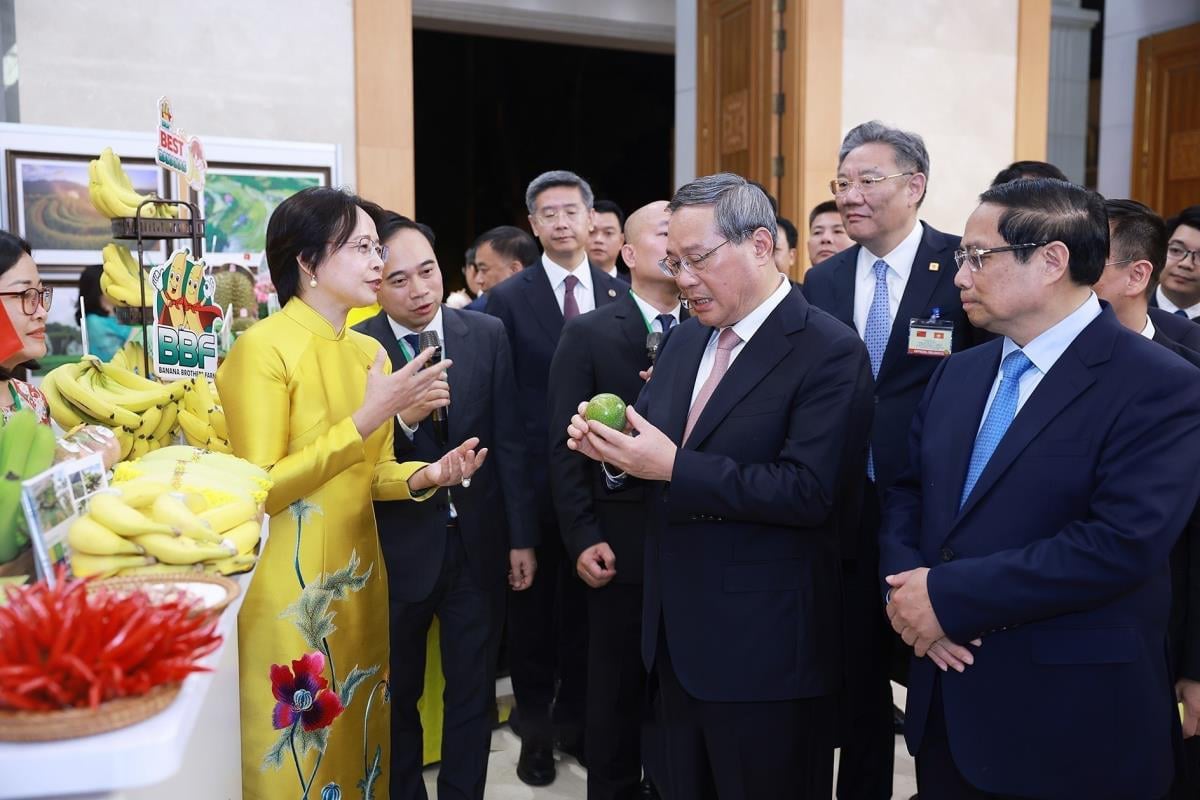
Prime Minister Pham Minh Chinh and Chinese Premier Li Qiang visit an agricultural products exhibition booth. Photo: TTXVN.
The trade surplus for the entire industry reached nearly 18 billion USD, up 46.8% compared to the previous year, confirming the key role of agriculture in the national economy. According to the Ministry of Agriculture and Environment, Vietnam has now risen to the 15th position globally in the export of agricultural, forestry, and fishery products, and is second in Southeast Asia, just after Thailand.
This achievement is attributed to the strong shift in the production structure, technological innovation in processing, and efforts to expand markets. In 2024, all sectors recorded positive growth. Agricultural products reached a turnover of 32.78 billion USD, up 22.4% compared to last year. Seafood reached 10.07 billion USD, an increase of 12.2%. Forestry products achieved 17.28 billion USD, up 19.4%. Although smaller in scale, the livestock sector also recorded a growth of 6.5%, with a value of 533.6 million USD.
Among the key products, many items achieved export values of over 1 billion USD, demonstrating strong competitiveness in the international market. Wood and wood products reached 16.2 billion USD, vegetables and fruits reached 7.12 billion USD, rice reached 5.75 billion USD, coffee reached 5.47 billion USD, cashew nuts reached 4.37 billion USD, shrimp reached 3.8 billion USD, and rubber reached 3.2 billion USD.
Not only did exports grow in terms of volume, but this year also saw a significant advance in added value. According to the National Authority for Agro-Forestry-Fishery Quality, Processing and Market Development (NAFIQPM), the average export price of coffee reached 4,037 USD/ton, an increase of 56.9% compared to 2023. The export price of rice reached the highest level globally, averaging 627.9 USD/ton, surpassing Thailand and India. These figures reflect efforts to enhance quality and build the brand of Vietnamese agricultural products in the international market.
In addition to product improvements, effectively leveraging free trade agreements, such as EVFTA and CPTPP, has helped Vietnamese agricultural products penetrate deeper into demanding markets like the EU, Japan, and Canada.
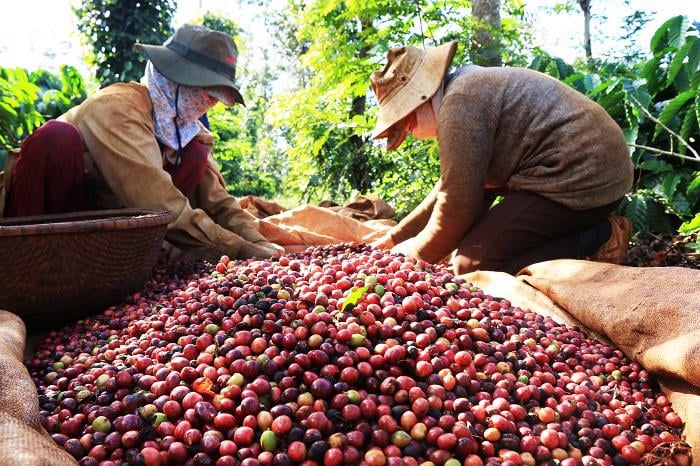
Vietnam is the world’s second-largest coffee producer, after Brazil. Photo: Bao Thang.
Among the major agricultural export markets, the U.S. continues to lead with a turnover of 13.8 billion USD, an increase of over 10% compared to 2023. Key export products to this market include wood and wood products, seafood, cashews, pepper, and fruits and vegetables. Notably, the United States has officially approved the direct importation of 8 fresh fruits from Vietnam, opening up significant opportunities for fruit-growing regions.
China remains a traditional market with strong growth. In 2024, the export turnover of fruits and vegetables to China reached 4.2 billion USD, up 38% compared to the previous year. Currently, 12 types of Vietnamese fruits are allowed for official export to China, helping to reduce risks associated with informal trade, which is often volatile.
With its stringent quality requirements and traceability standards, the EU remains a significant potential market. In 2024, export turnover to the EU reached 5.17 billion USD, an increase of 18.5%. Key products include coffee, cashews, seafood, and wood. A major driving force for growth in this market comes from reducing tariffs under the EVFTA agreement.
Meanwhile, Japan and South Korea are stable markets but have very high quality and food safety demands. Last year, exports to Japan reached 4.6 billion USD, and exports to South Korea totaled 8.18 billion USD. Agricultural products such as tropical fruits, coffee, pepper, and rice remain strong in these markets.
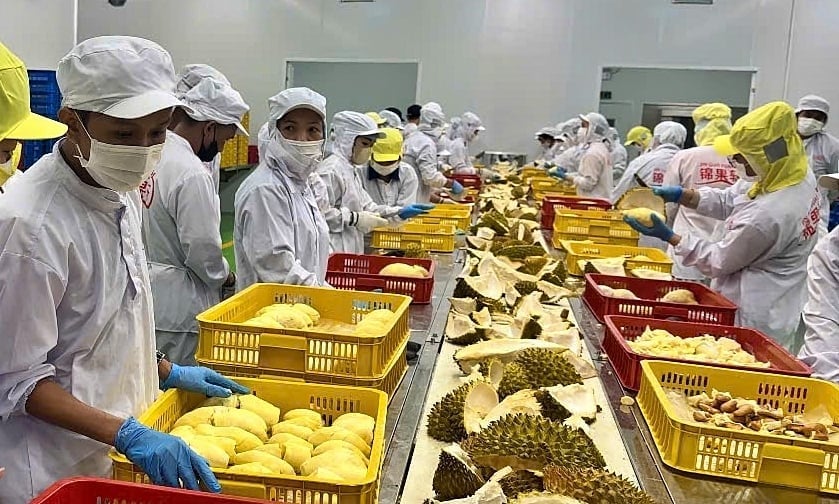
Vietnam has just opened the export of frozen durian products to China. Photo: Bao Thang.
Vietnam is focusing on traditional markets and gradually expanding into potential markets that have not yet been fully explored. India, with a population of nearly 1.4 billion people, is one of the most promising markets for tropical fruits such as dragon fruit, mangoes, and bananas. However, exports to this market remain limited due to technical barriers and a lack of market information.
Similarly, the Middle East and Islamic countries have a high demand for Halal food products such as rice, seafood, and processed foods, but the lack of Halal certification standards and an integrated supply chain pose significant challenges that need to be addressed.
Africa is also an emerging market with rising demand for food, especially rice and seafood. However, major difficulties stem from weak logistics infrastructure and the lack of harmonization in import regulations between countries. Latin America, with countries like Brazil, Mexico, and Chile, has diverse demands, but the competition is intense, and the quality requirements are stringent.
Meanwhile, Vietnam used to be familiar with the Russian and Eastern European markets, but recently, they have been disrupted due to political fluctuations, requiring a restart of strategies and adaptation to new conditions.
In addition to the market, Vietnam's competitive advantage in agricultural products comes from groups of products with a strong global position. Vietnam is the world's largest exporter of Robusta coffee, accounting for about 40% of the market share. Vietnamese rice is among the top three largest rice exporters, renowned for its high quality and ability to meet demanding markets.
Vietnam also leads the world in cashew and pepper exports, ranks third in rubber, second in Asia for timber and wood products, and sixth in tea. Products like shrimp, pangasius, and tuna contribute significantly to maintaining Vietnam's position among global seafood exporters.

The year 2024 marks remarkable growth in the export of fruit products. Photo: Dao Ngoc Thach.
Leadership at various levels in economic diplomacy activities makes an important contribution to boosting exports. In 2024, General Secretary To Lam and Prime Minister Pham Minh Chinh engaged in numerous diplomatic activities and meetings with strategic partners.
Notably, Chinese Prime Minister Li Qiang's visit to Vietnam in October 2024 resulted in 10 cooperation agreements, many of which focused on agricultural trade and upgrading border logistics infrastructure.
The United States is expected to impose retaliatory tariffs on trade partners in early 2025. In response to the potential threat of trade defense measures, the government promptly organized meetings with industry associations to develop countermeasures and protect market share.
Among the strategies to achieve growth and export targets for 2025, the Ministry of Agriculture and Environment has directed the entire agricultural sector to continue improving product quality, invest in deep processing technology, and establish stable raw material regions that meet international certifications such as Halal, GlobalGAP, and Organic. Additionally, efforts will be made to promote national branding and marketing for key products such as coffee, rice, shrimp, and tropical fruits.
The policy of developing specialized farming regions, combined with maximizing the benefits of new free trade agreements, will create a solid foundation for Vietnamese agricultural products not only to maintain their position but also to make a stronger breakthrough in the global value chain.
Translated by Phuong Linh
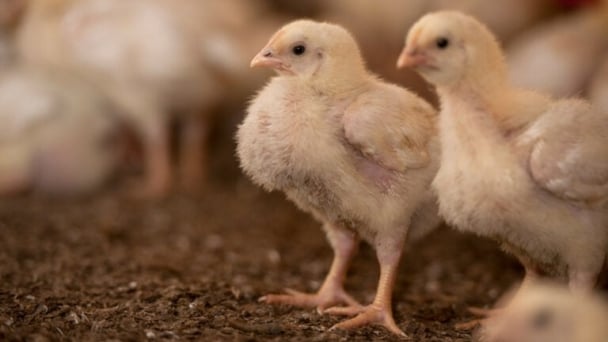
(VAN) A recent study by the Royal Veterinary College has highlighted key challenges preventing the UK poultry industry from adopting higher welfare standards outlined in the Better Chicken Commitment.

(VAN) Prime Minister Pham Minh Chinh affirmed that Vietnam has always been a reliable partner, ready to actively participate and take the lead in maritime cooperation mechanisms and ocean protection efforts.

(VAN) World Food Safety Day 2025 emphasizes the urgency of practical actions, science-based approaches, and strengthened coordination among stakeholders.
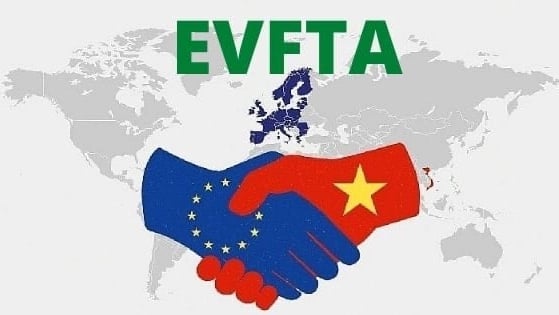
(VAN) The benefits brought by the EVFTA are particularly significant, as the EU has consistently been one of Vietnam's four largest export markets for agricultural, forestry, and fishery products.
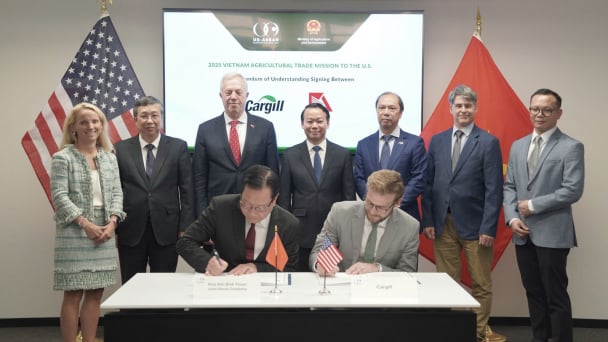
(VAN) Vietnam agribusinesses accompanying Minister Do Duc Duy signed agreements worth $1.1 billion, raising the total number of MOUs during the trip to 20, with a combined value approaching $3 billion.
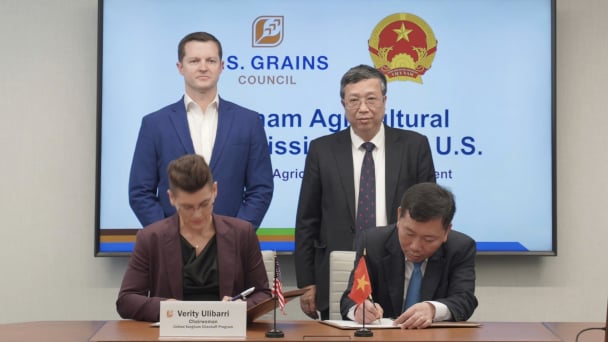
(VAN) The U.S. Grains Council signed a 5-year cooperation agreement with the Partnership for Sustainable Agriculture in Vietnam (PSAV) during MAE's agricultural trade mission.
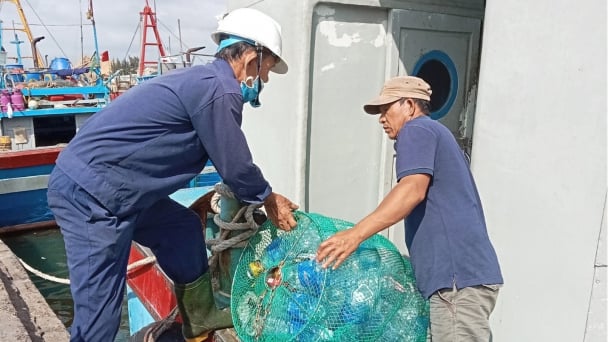
(VAN) Vietnam Agriculture and Nature News interviewed Mr. Vu Thai Truong, Acting Head of Climate Change and Environment at UNDP Vietnam on the occasion of World Environment Day (June 5).